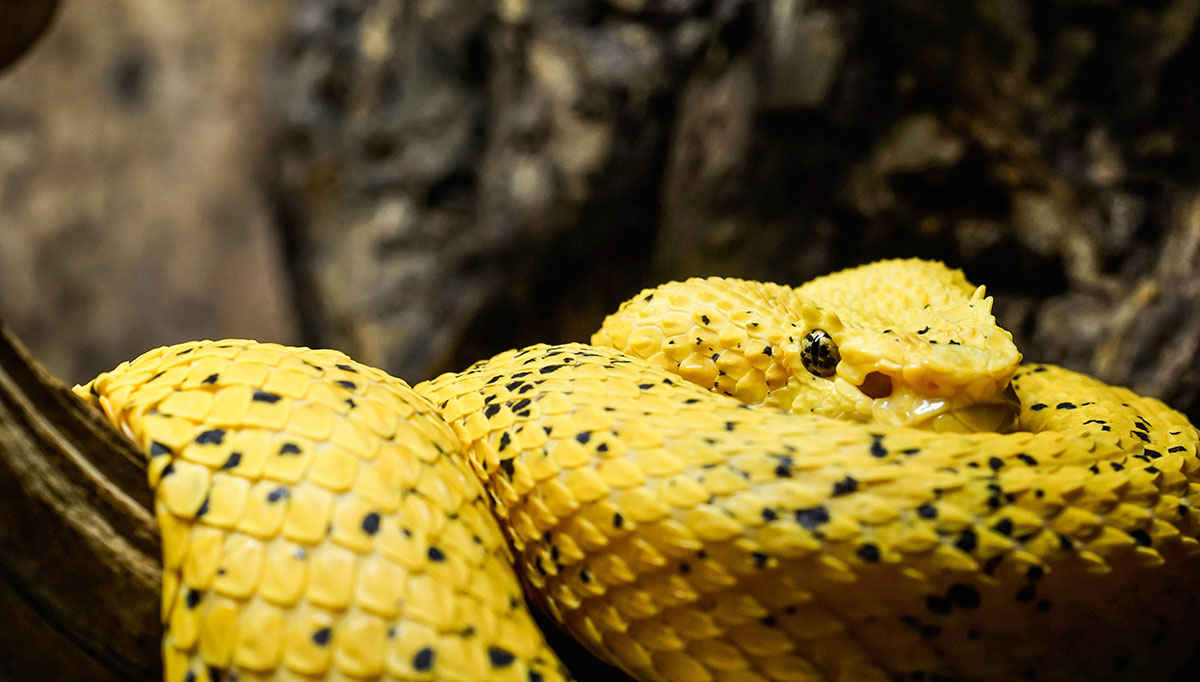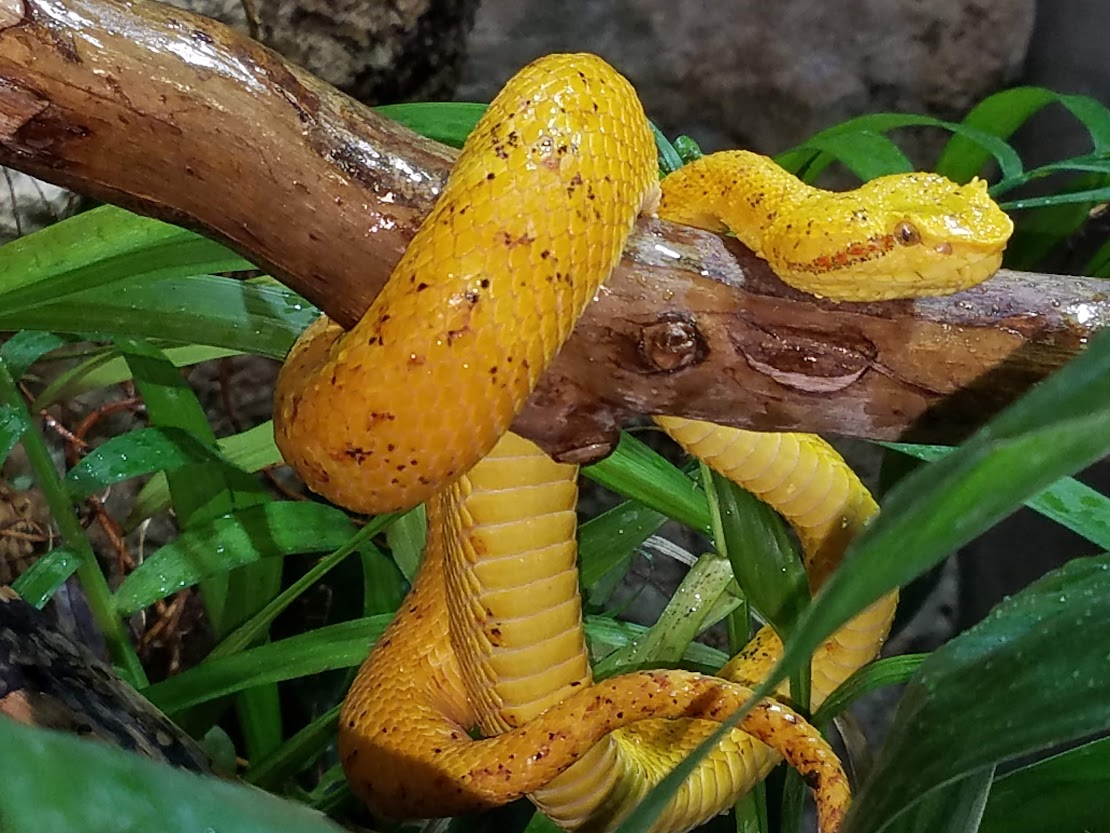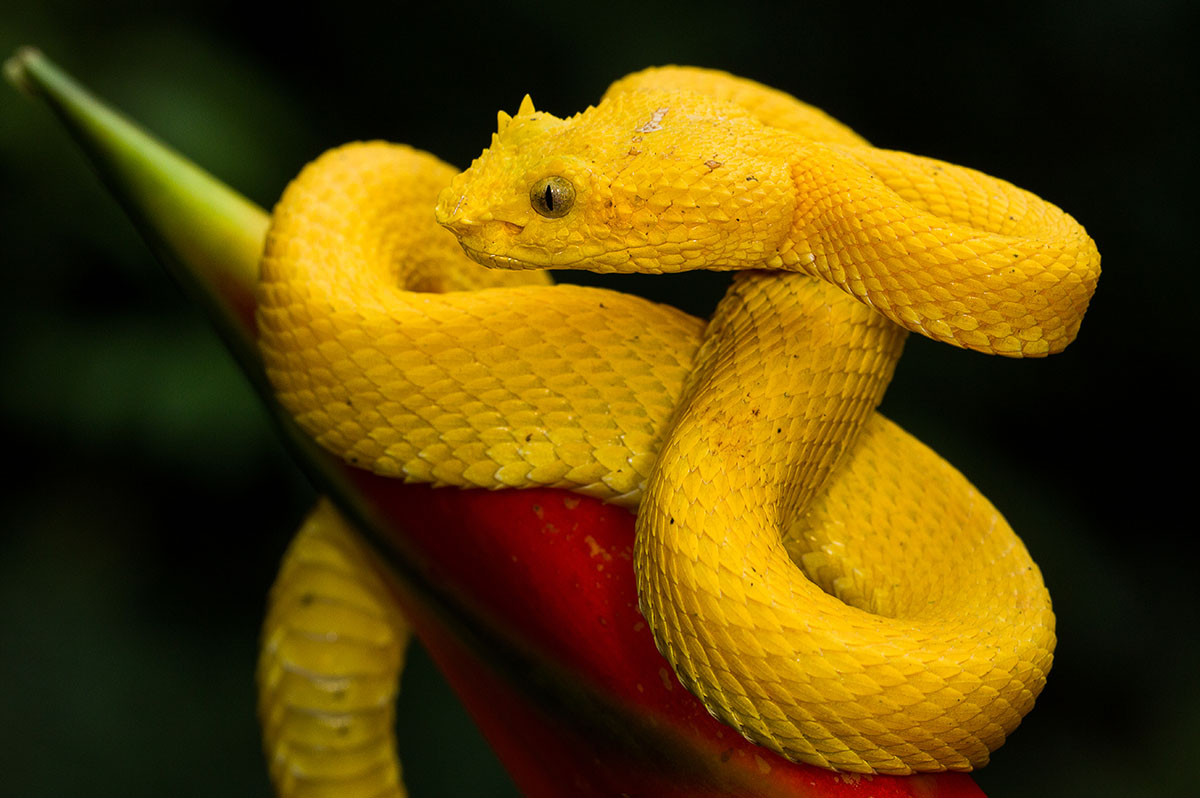Description: Eyelash palm vipers are also known as Eyelash palm pit vipers and Eyelash palm vipers. They are named for the small, bristly, keeled scales that protrude just above their eyes like eyelashes. It is believed that these ‘eyelashes’ aid in camouflage. There is a wide range of color within this species. Their dorsal coloration is usually bright green or yellow, however, they can also be bright yellow, brown, dark gray, green, silver and even pink. Their markings are variable: they can have black or brown speckling, green, orange, pink or red markings on their base color. Some may not have any patterns. They have a wide triangular head, a short to moderate prehensile tail, long sharp fangs, a venomous bite (potentially harmful but normally not lethal) and rough, keeled scales.
Size: This species is a small- to medium-sized pit viper. Adult body length ranges from 22 – 36 inches (56 to 91 cm), with females typically longer and more variable in size than males.
Behavior: Eyelash palm vipers are primarily nocturnal predators, fairly aggressive, generally solitary and spend little time on the forest floor. These slow-moving predators rely on camouflage to ambush their prey, therefore they choose their habitat in accordance with their coloring, for example: red ones inhabit red colored bromeliads and yellow ones inhabit areas where there are a lot of bananas.
Diet: Eyelash palm pitvipers feed on a wide variety of small vertebrate animals, such as birds, frogs,
lizards, rodents and small mammals. These sit-and-wait predators attack their prey quickly, inject it with hemotoxic venom, wait for the prey to die and then swallow it whole.
Senses: Like all snakes, they have primitive ear structures that do not hear ‘sound’ but rather sense nearby vibrations. To sense their environment, they rely on heat imaging by using heat-sensitive pits that are set between the eyes and nostrils. They also sense chemical changes in the air by flicking their long tongue. They have well-developed binocular vision, the ability to see an object with both eyes at the same time, therefore giving them great depth perception.
Communication: In addition to the visual cues used for mating, they also use chemical substances called pheromones to communicate.
Reproduction: They reproduce throughout the year and mating usually occurs at night. Males participate in a courtship ritual, a “dance of the adders”, to attract females. Two males face each other in a cobra-like stance in an attempt to intimidate one another. Victory goes to the snake that is not pushed away or falls to the ground. They are ovoviviparous, meaning females produce eggs that are hatched within her body. They usually have 2-20 live young per brood. When born, the young snakes are fully developed and capable of injecting venom.





